
In the 20 years since the Association of Theological Schools (ATS) launched its Women in Leadership initiative, the number of female CEOs at member schools has risen from 3 percent to 13 percent. For chief academic officers, growth went higher, from 9 to 25 percent overall, with even higher percentages at mainline schools than Catholic or evangelical ones.
While numbers don’t tell the whole story, they serve as evidence that women still face hurdles in landing top positions in graduate theological education. In no ATS category have women broken the 30 percent threshold — the average for women leaders in higher education overall.
Even once they do get into the president’s, provost’s, or dean’s office, women face challenges their male counterparts do not. But six seminary leaders who spoke to In Trust say that finding supportive communities is a key to navigating those challenges successfully.
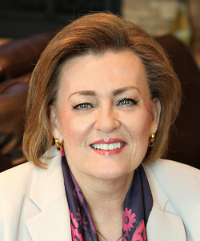
Courtesy Evangel University
Today, sexism is less overt than in past generations and often comes from students, not colleagues, women leaders say. They get comments about their attire, or are addressed as “Mrs.” rather than by their academic titles.
But the most common challenge is more insidious: women leaders feel they have to prove themselves in a way that men do not.
“There’s a sense that you have to not just be competent, but really, really competent,” says Dr. Carol Taylor, who recalls being asked in an interview how she would handle being the first woman assistant provost at Biola University, an evangelical university in La Mirada, California, where she subsequently served from 2000–07. (Biola named their first female provost in 2016.)
“I said, ‘What I hope is that the quality of the work we do would be the primary focus and concern.’”Taylor is now president of Evangel University in Springfield, Missouri, which includes an embedded theological school, Assemblies of God Theological Seminary. “Over time you either earn the respect of the community or not,” she adds.
Sister Anne Anderson agrees. She was the first woman dean of the Faculty of Theology of the University of St. Michael’s College at the University of Toronto, and later the first president over all of St. Mike’s. “It always seems, as a woman, you had to work a little harder,” she says.
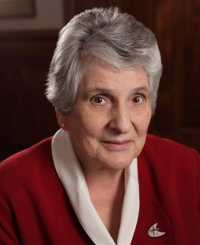
Credit: Michael Nikas Dismatsek
hen a hiring committee chose Dr. Jan Love to become dean of the Candler School of Theology at Emory University in Georgia, four of the five bishops on the board opposed her, ostensibly because her background was in political science, not theology, and because she was not ordained.
“There was no objection to me being a woman that was explicit, but I don’t know the degree to which a man who had been in my position — a prominent lay leader all his life in national and international churchcircles — would have been opposed,” she says.
Shirley Hoogstra had already served as an elder and a deacon in the Presbyterian church when she left her law practice to become vice president of student life at Calvin College. While her background as an attorney gave her a certain credibility, power, and influence, she has also recognized that, perhaps even subconsciously, “often more immediate authority is given to men than to women.”
For example, a male colleague could dress casually, in khaki pants, and still maintain his authority. “I do not wear khaki pants and expect the same response,” Hoogstra says.
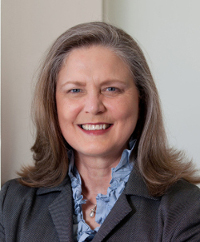
Courtesy Candler School of Theolog
Now, as president of the Council for Christian Colleges and Universities (CCCU), Hoogstra oversees its Women’s Leadership Development Institute, which provided support to her for 15 years. “They were people who understood the pressure, rooted for you, and had your back,” she says.
Overt sexism declining but not gone
Hoogstra believes overt sexism against women leaders in theological higher education — and academia in general — has lessened considerably during her professional career. “People have worked hard to get women into leadership over the past 25 years,” she says. “I’m rarely in all-male groups anymore.”
But women leaders still have to be attentive to sexism and to work harder to “manage around gender bias,” Hoogstra says. “I don’t think it’s gone.”
Differences in the percentage of female leaders at mainline, evangelical, and Catholic institutions imply that theological views on the role of women can affect women’s chances at leadership. In denominations that hold a more “complementarian” view of women, or in which women cannot hold office or be ordained, such attitudes can affect whether women are seen as candidates for leadership.
At Catholic seminaries, women leaders have tended to come from the ranks of women religious, although lay women and men are more recently “coming into their own,” Anderson says. Anderson herself is a member of the Sisters of St. Joseph of Toronto.
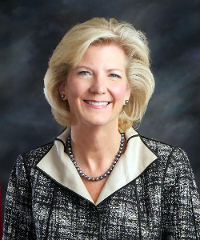
Courtesy Council for Christian Colleges and Universities
But just because a seminary is progressive doesn’t mean there isn’t any sexism, says the Rev. Dr. Sheryl A. Kujawa-Holbrook, vice president of academic affairs and academic dean at Claremont School of Theology in California. She is grateful that her president, as a person of color, has personal understanding of inclusion and equity issues.
Nevertheless, women everywhere continue to strive for pay equity and opportunities for research. “Women can be such capable administrators because we spend much of our life multitasking,”
Kujawa-Holbrook says. “If we don’t watch it, it would be easy to assign women to all the committees, so the men can go write books.”
Seminaries need to embrace not only female leaders, but especially women of color, says the Rev. Dr. Boyung Lee, senior vice president of academic affairs and dean of the faculty at Iliff School of Theology. Lee is the first Korean American woman dean at a theological school in the United States. Women of color — who sometimes face both sexism and racism — are well prepared to lead schools and represent seminaries’ future audiences, she says. At Iliff, half of the faculty are people of color, Lee says, and the same must be true in leadership: “We cannot have a token person here and there.”
A perilous top post: the glass cliff
Unlike the “glass ceiling”— which refers to the informal barrier that keeps women from advancing up organizational ladders — the “glass cliff” means that women and other underrepresented groups are more likely to get promoted, but only if the organization is facing a crisis.
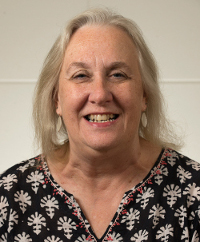
Courtesy Claremont School of Theology
In 2009, Vanguard University was facing a crisis that included financial challenges, possible loss of accreditation, and the abrupt resignation of its president. Less than two years before, in August 2007, Carol Taylor had been named provost and vice president of academic affairs of the university, coming from Biola, which is just 25 miles away. But in this critical moment in January 2009, she was tapped to lead the school, first as acting president, and then, just two months later, as president. She guided a dramatic turnaround of the Assemblies of God institution in Costa Mesa, California.
Taylor doesn’t think she was chosen because of her gender, although she admits the situation was severe and the board’s options were limited. “Some board members said they knew I was the right person to do this,” she recalls. “But it might have been that there was no one left willing to take a risk.”
Her move into the presidency at Vanguard reflects what she calls an “organic process” toward leadership, in which she found herself taking on responsibilities that ultimately led to higher positions. “It was less a move into leadership than it was a pull and opportunity to help,” she says. “You’re asked to take on something, you do it well, then you’re asked to do more. It’s a gradual progression.”
But Hoogstra believes there is some truth to the glass cliff theory: “If you’ve got challenges, people are more willing to think outside the box. It can lower resistance to difference.”
Many women leaders say they did not plan to move into top-level jobs. Colleagues or mentors recognized and tapped their leadership qualities, and the women stepped up.
Kujawa-Holbrook had had experience as a dean at Episcopal Divinity School in Cambridge, Massachusetts, but she had returned to a faculty position at Claremont when the new president asked her to serve as interim dean during a time of transition.
“My generation came up in an era that if you worked in a theological school, you did anything to support it,” she says. “In this difficult time, there are difficult jobs, and women will do them.”
The importance of community
As a faculty member at the Pacific School of Religion in Berkeley, California, Lee had been asked to consider moving into leadership. But it wasn’t until the traumatic loss of her husband, who died of heat stroke while out on a run in 2011, that she was open to it. She credits a spiritual director with helping her see that she was being called to a new role.
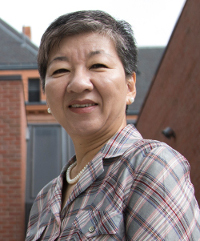
Courtesy Iliff School of Theology
Lee believes her leadership style is influenced not only by her gender, but by her cultural background. As a Korean American, she embraces a communal decision-making process that focuses on building relationships, which differs from individualistic leadership styles more common in the United States.
Lee says she has found support not only from women in general, but more specifically from theologians and leaders who are Asian Americans or people of color.
She is active in the group called Pacific, Asian and North American Asian Women in Theology and Ministry (PANAAWTM) and is part of a closed Facebook group with other women of color who are deans at theological schools.
Other women leaders share Lee’s appreciation for professional networks. Whether informally with friends or colleagues, or more intentionally through programs such as the women-in-leadership groups at ATS or the CCCU, women leaders find support from communities of other women.
“There’s strength in the sisterhood,” says Anderson, referring not just to the Sisters of St. Joseph but to the community of the ATS Women in Leadership initiative. “Sometimes being in leadership is really lonely. There was a sense of solidarity. You could call any of them and ask, ‘How would you handle this?’”
Taylor has found support and empathy from women in the CCCU’s program for women leaders. In the women-only group, “they are willing to open up and share their experiences and stories,” she says. “In a mixed group, women can still be fairly guarded in talking about their experiences. Often these women are the only female at the table at their institutions.”
Jan Love has also found support in circles of women leaders. “We don’t always agree with each other, but we do a great job of supporting one another.”
In return, women seminary leaders are committed to investing in younger women, including students and colleagues, in order to grow future leaders. They say their younger colleagues need not just mentors but advocates or sponsors — people who not only coach and encourage but also connect women with opportunities.
When Love was a young lay leader, a denominational women’s group repeatedly put her name forward and helped her gain exposure and opportunities.
“I didn’t realize it at the time, but they were investing in me,” Love says.
Taylor also tries to encourage younger women, including students, who sometimes tell her that a female university president gives them hope.
But with that example comes pressure to succeed, because failure by women in leadership can cripple other women’s chances. “But if we serve well, it continues to open that door for other women,” Taylor says. “We have come a long way, but we still have a long way to go.”




























